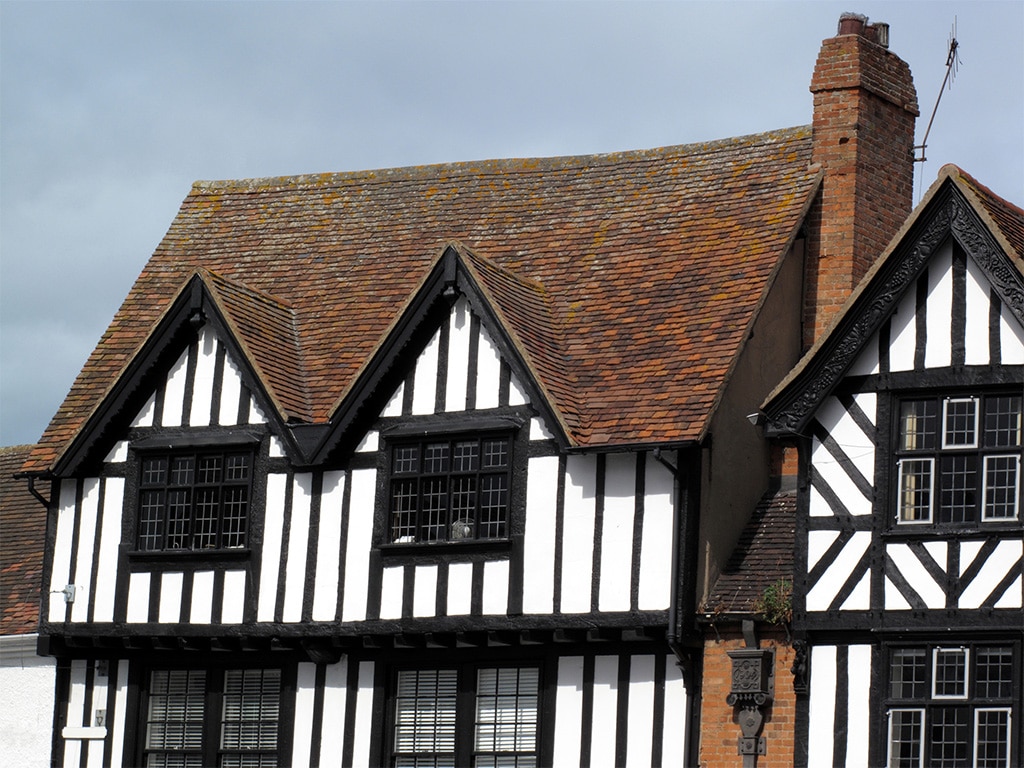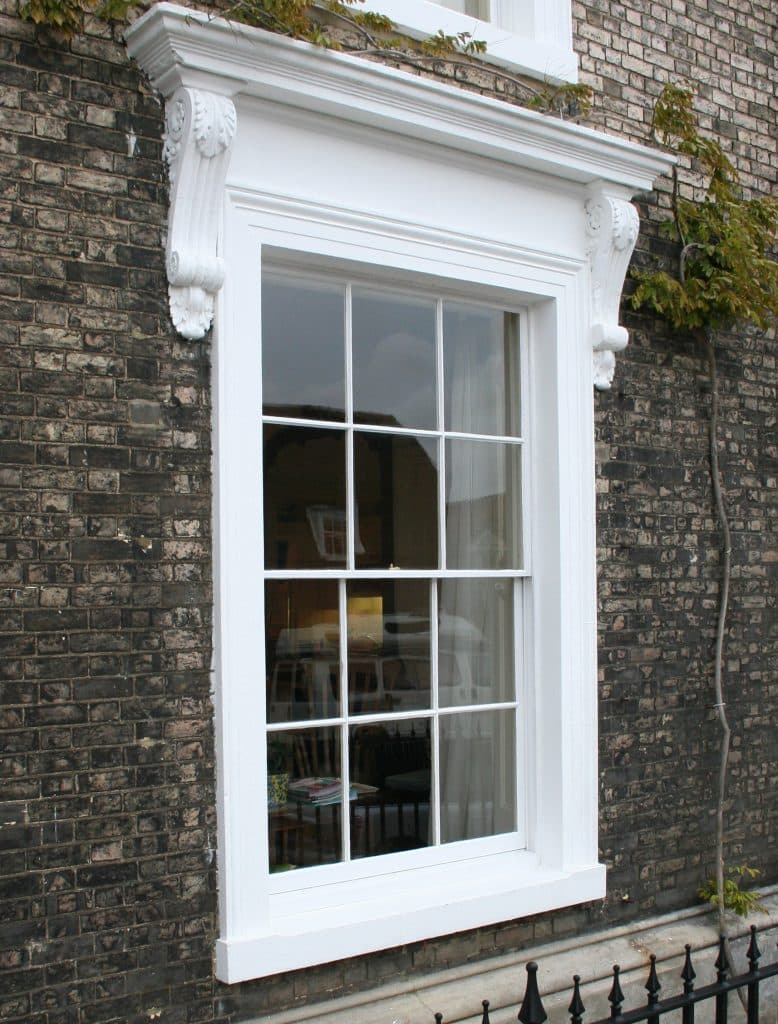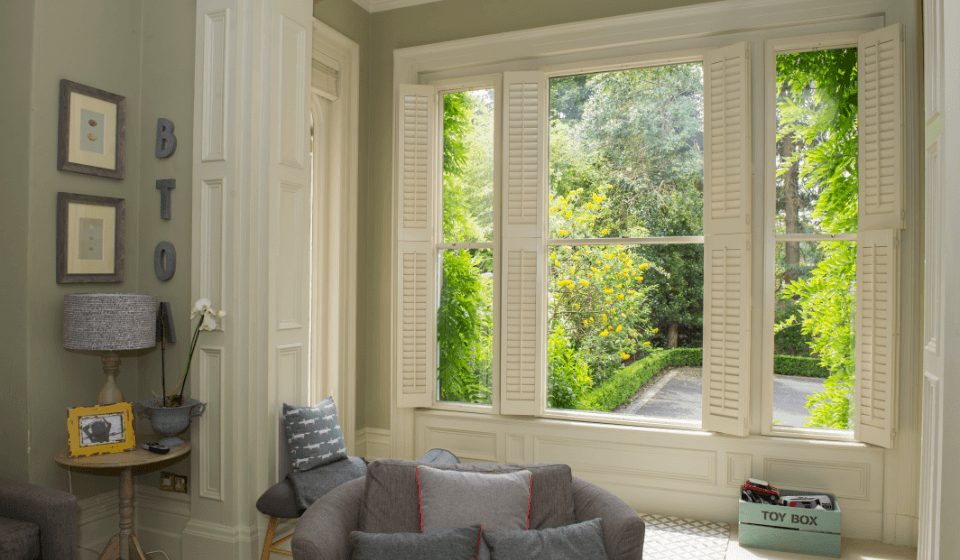What style of timber window can I have?
As custodians of heritage detail, there’s nothing more important to us than ensuring every aspect of the timber windows we restore or craft are true to the period of the property. It’s not an easy obsession to fulfil – but we love a challenge!
When it comes to timber windows – whether it’s a Georgian casement, Victorian sash, French door or arch window – the variations are vast. From glazing design and frame detail to hardware and window size. That’s why our eye for detail is crucial in helping you get it just right. When we survey a window, we will always try to renovate it rather than replace it. However sometime this just isn’t possible. A window may have been left until it’s beyond repair – or an extension may require a window to match the rest of the property – so we will craft a new window that mirrors your original windows. What are your options?
Sash or casement windows?
Side hung casement windows were around long before sash windows. They often consisted of leaded glazing bars and smaller glass panes – a simple solution to filling a simple unglazed opening in a building. Tudor properties have mostly casement windows – tall and narrow or larger, often with dark wooden frames and many with lattice glass, as techniques to make larger panes had not yet been mastered.

Although casement windows started off simple in design, towards the mid 19th century they become more elaborate, encompassing woodwork with details such as fleur-de-lis and scrolls, and eventually featuring larger glass panes.
When it comes to sash windows, there are three main styles, which were developed across three eras. Here’s a bit more about each one:
Georgian sash windows
Georgian sash windows are a popular style of window that is characterised by its elegant design and functional features. These windows were prevalent during the Georgian era, which spanned from 1714 to 1837, and they continue to be popular in modern times due to their timeless appeal.
The single-hung sash, with only one section that moves, is the oldest design, dating back to Georgian times. The Georgians then developed this into a double-hung sash, which was adopted by the Victorians and Edwardians.
One of the defining features of Georgian sash windows is their proportionality In double-hung sash windows, both sections open and close – but there are many variations in the glazing style – four-over-four, nine-over-nine and six-over-two. These are known as “lights,” with a central vertical bar, or “muntin,” dividing each light.
The top sash is smaller than the bottom sash, which gives the window a balanced and symmetrical appearance. Georgians preferred the six-over-six design, which separated panes of glass with glazing bars.
The window frame is usually made from wood, with a deep frame profile that adds depth and dimensionality to the window. The sashes themselves are typically made from multiple panes of glass, which allows for a greater amount of natural light to enter the room. The sashes are counterbalanced by weights, which are hidden within the window frame, and can be opened to different heights to allow for ventilation. The window design allows for easy cleaning of both the inside and outside of the window, as each sash can be moved independently.
Today, Georgian sash windows continue to be popular among homeowners who appreciate their classic design and functionality. They are a versatile option that can complement a wide range of architectural styles, from traditional to modern. Their durability and energy efficiency also make them a wise investment for those looking to improve the value of their property.

Victorian sash windows
Victorian sash windows are a popular style of window that emerged during the Victorian era, which spanned from 1837 to 1901, a time of great social and cultural change in England. The windows were often used in Victorian townhouses, which were characterized by their grandeur and opulence.These windows are characterised by their ornate design, intricate detailing, and functional features, and they remain a popular choice for homeowners today.
Victorian sash windows often have one large pane of glass in each sash. Often larger sash windows feature on the ground floor of a property, and smaller sashes on upper storeys. And as is often the way with the Victorians, they favoured larger panes to indicate their wealth – the heavy window tax made large panes of glass unaffordable to less wealthy people.
The windows are often adorned with intricate carvings and moldings, which add depth and dimensionality to the window frame. The glazing bars may be curved or shaped in a decorative pattern, and the window frame itself may be decorated with intricate detailing.
Like their Georgian counterparts, the windows are counterbalanced by weights that are hidden within the frame, allowing for easy opening and closing of the sashes. The windows are also designed to provide good ventilation, with the ability to open the sashes to different heights to control the flow of air.
Today, Victorian sash windows continue to be a popular choice for homeowners who appreciate their classic design and functionality. They are a versatile option that can complement a wide range of architectural styles, from traditional to modern. Their ornate detailing and historical significance also make them a popular choice for those who are renovating or restoring period properties.

Edwardian sash windows
During the Edwardian era, which spanned from 1901 to 1910, sash windows became multi-paned on the upper sash and had a single pane on the lower sash. Sash windows were typically larger in these times, as architects looked to flood more generously-proportioned homes, with higher ceilings and larger rooms, with light.
One of the defining features of Edwardian sash windows is their simplicity and elegance. Unlike the ornate designs of Victorian sash windows, Edwardian sash windows have a more streamlined and modern aesthetic. The glazing bars are typically straight and simple, and the window frame is often painted in a neutral color to complement the exterior of the property.
But the variation doesn’t end there. During each of these eras, architects were known to develop their own interpretations of sliding sash windows and casement windows, which led to additional forms, new details or different glazing. All of which we can replicate.
Like their Georgian and Victorian counterparts, the windows are counterbalanced by weights that are hidden within the frame, allowing for easy opening and closing of the sashes.

Bespoke timber windows for period homes
While most of the work we do is on sash or casement windows, it’s also not unusual for heritage buildings to have windows of more distinctive shapes and styles. These can include Yorkshire sliders (horizontal sliding sash windows), hopper windows, round- and arch-shaped windows, French doors and more – you can read about some of these in more detail here. At Ventrolla, we have the expertise to restore or make timber windows in a whole host of styles at our workshops – even if you’re looking for a high-quality window design that’s unique to your home.
Contact our experts today, we are always available to answer your questions and to help you find the perfect solution for your property.
FAQs about What style of timber windows are available
1. What types of timber windows are available?
There are several types of timber windows available, including casement windows, sliding sash windows, tilt and turn windows, and bay windows.
2. What are casement windows?
Casement windows are hinged at the side and open outwards. They are one of the most popular types of timber windows, and they are available in a range of styles and finishes.
3. What are sliding sash windows?
Sliding sash windows have two sashes that slide up and down vertically. They are a traditional style of timber window and are often found in older properties.
4. What are tilt and turn windows?
Tilt and turn windows are hinged at the bottom and can be tilted inwards for ventilation, or opened fully inwards for cleaning and access.
5. What are bay windows?
Bay windows are a series of windows that project outwards from the main wall of a building. They are often used to create additional space and light in a room.
